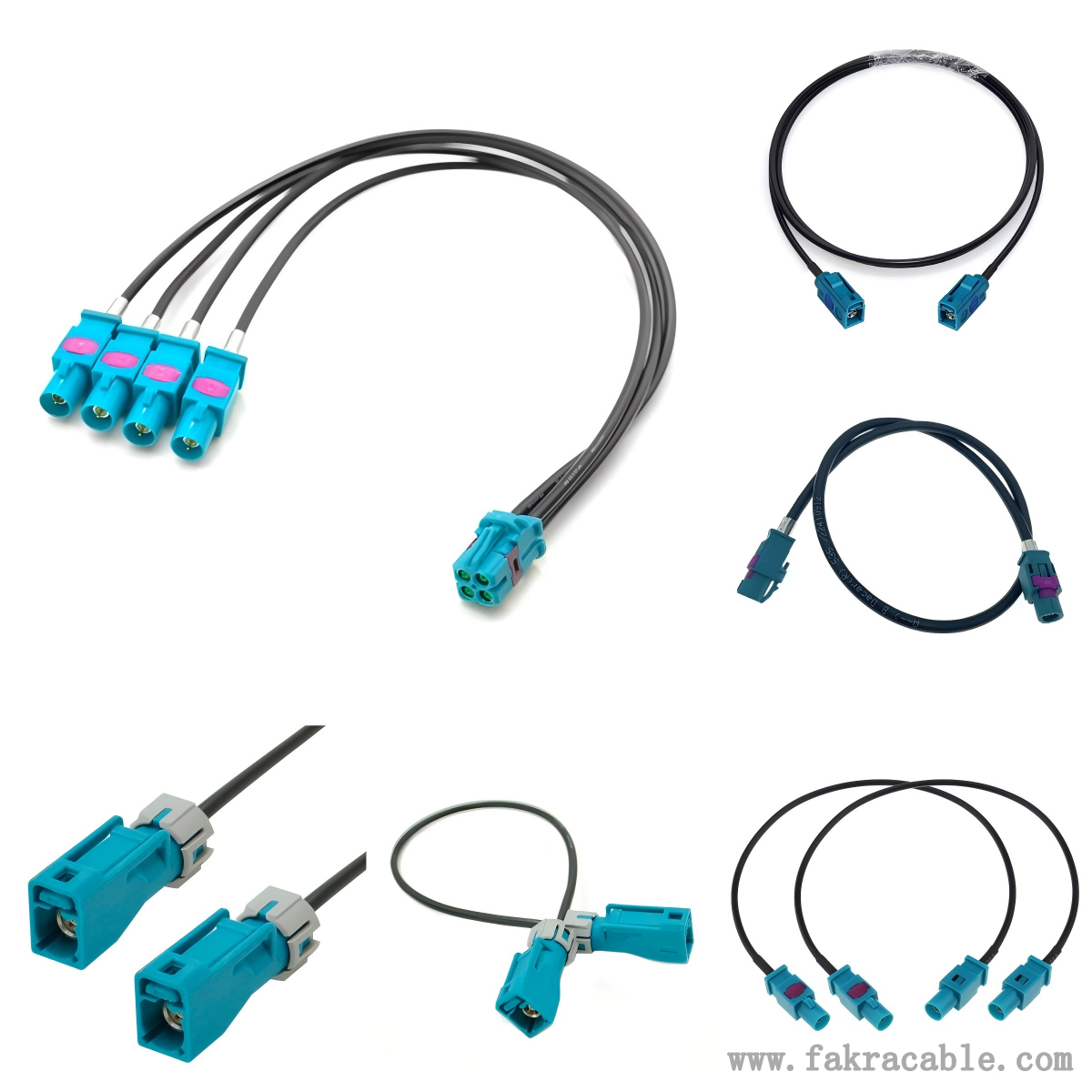How to determine the shielding performance of Mini FAKRA cables?
To determine whether the shielding performance of Mini FAKRA cables is good, we can start from the following aspects:
Appearance and structural inspection
Shielding layer material: High quality Mini FAKRA cable shielding layer usually uses metal materials with good conductivity such as copper and aluminum, such as tin plated copper braided mesh or aluminum foil, which can provide good electromagnetic shielding effect. If low-quality metal or impure material is used for the shielding layer, it will affect the shielding performance.
Shielding layer structure: Carefully observe the cross-section of the cable to check whether the shielding layer is uniform, complete, and whether there is any damage, breakage, or gap. The ideal shielding layer should tightly wrap around the internal conductor without any visible defects. Multi layer shielded cables, such as those with metal braided mesh and aluminum foil shielding layers, and tightly bonded between the two layers, usually have better shielding performance than single-layer shielded cables.
Shielding layer coverage: The higher the coverage of the shielding layer, the better the shielding effect.

Electrical performance testing
Shielding attenuation test: Using professional equipment such as network analyzers, conduct shielding attenuation tests on cables within a certain frequency range. Measure the attenuation of electromagnetic signals by cables at different frequency points.
Transfer impedance test: Transfer impedance is an important indicator for measuring the electromagnetic interference suppression ability of cable shielding layers. Measure the transfer impedance of the cable per unit length using specialized testing equipment. The lower the transfer impedance, the better the shielding performance of the shielding layer. Generally speaking, the transfer impedance of Mini FAKRA cables should be at a lower level, such as below a few milliohms per meter.
Electromagnetic compatibility (EMC) testing: Place the cable in a specific electromagnetic environment for electromagnetic emission (EMI) and electromagnetic immunity (EMS) testing. In EMI testing, observe the electromagnetic interference intensity generated by the cable to the outside world during operation; In EMS testing, the stability of cables under external electromagnetic interference is tested. If the cable meets the relevant standards and requirements in EMC testing, it indicates that its shielding performance is good.
Practical application testing
Signal transmission stability: Connect the Mini FAKRA cable to the actual automotive electronic system and observe the stability of signal transmission. When various electronic devices in the car are working, if there are other strong electromagnetic sources around, if the shielding performance of the cable is good, the transmitted signal should have no obvious interference, distortion or loss, such as clear video signal, no noise in audio, and no errors in data transmission.
Compatibility with other devices: Connect and test cables with different automotive electronic devices to check their compatibility with various devices. If the cable can work normally without mutual interference when connected to multiple devices, it indicates that the shielding performance of the cable can meet the practical application requirements.
Contact: Mandy He
Phone: 15170973126
E-mail: obdwire@126.com
Whatsapp:
Add: 2nd Floor, Building 14, Aviation Science and Technology Innovation Area A, Nanchang Gaoxin Zone, Nanchang, China
We chat
